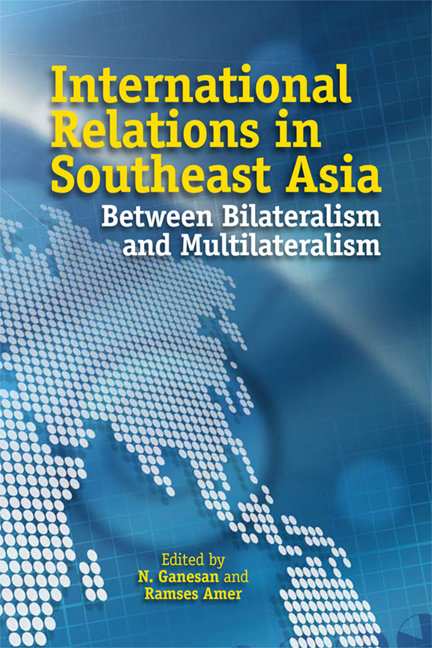Book contents
- Frontmatter
- Contents
- Preface
- List of Abbreviations
- Contributors
- Introduction
- Part I On International Relations
- 1 Multilateralism, Regionalism, and Bilateralism: Conceptual Overview from International Relations Theory
- 2 Southeast Asian International Relations: Is There Institutional Traction?
- Part II Case Studies — Mainland Southeast Asia
- Part III Case Studies — Maritime Southeast Asia
- Conclusion
- Index
2 - Southeast Asian International Relations: Is There Institutional Traction?
from Part I - On International Relations
Published online by Cambridge University Press: 18 November 2017
- Frontmatter
- Contents
- Preface
- List of Abbreviations
- Contributors
- Introduction
- Part I On International Relations
- 1 Multilateralism, Regionalism, and Bilateralism: Conceptual Overview from International Relations Theory
- 2 Southeast Asian International Relations: Is There Institutional Traction?
- Part II Case Studies — Mainland Southeast Asia
- Part III Case Studies — Maritime Southeast Asia
- Conclusion
- Index
Summary
Regionalism in contemporary Southeast Asia began inauspiciously in the 1950s with the Bandung Conference and the ill fated Association of Southeast Asia (ASA) and Malaysia-Philippines-Indonesia (Maphilindo) — separate efforts to organize mainland and insular Southeast Asia. Nor was the Southeast Asia Treaty Organization (SEATO) any more successful, a weak American attempt to create a multilateral Western alliance for Southeast Asia against Soviet and Chinese challenges to the region's political future. Only in the late 1960s did non-communist Southeast Asian states create an indigenous political organization — ASEAN — that has survived and even prospered over the past forty years, producing a number of spinoff organizations with expanded memberships including the great powers. The family consisting of ASEAN Plus Ones, ASEAN Plus Three, the ASEAN Regional Forum (ARF), the Asia Pacific Economic Cooperation (APEC) forum, and most recently the East Asia Summit constitute the most elaborate politico-security-economic combination international bodies in the developing world. But how effective are they? Have ASEAN and its institutional offspring gained traction? Do they function as a security community? Have they aggregated political and economic interests collectively? Have they presented a united political front to other states? And have they worked together to resolve their internal security problems and protect each other against external threats?
Until the Asian financial crisis of 1997–98, ASEAN was generally considered the most successful multinational political organization among developing countries in the world. ASEAN's international reputation was burnished in the 1980s by its ability to keep the United Nations focused on the necessity of repelling Vietnam's invasion and occupation of Cambodia. Hanoi's subsequent withdrawal — though achieved because of the Chinese-Soviet rapprochement — was seen as a major ASEAN victory. ASEAN also arranged annual meetings between the Association and the great powers (the United States, China, Japan, and the European Union) to discuss an agenda of political, economic, and security issues generated by the Southeast Asian states.
- Type
- Chapter
- Information
- International Relations in Southeast AsiaBetween Bilateralism and Multilateralism, pp. 37 - 64Publisher: ISEAS–Yusof Ishak InstitutePrint publication year: 2010



